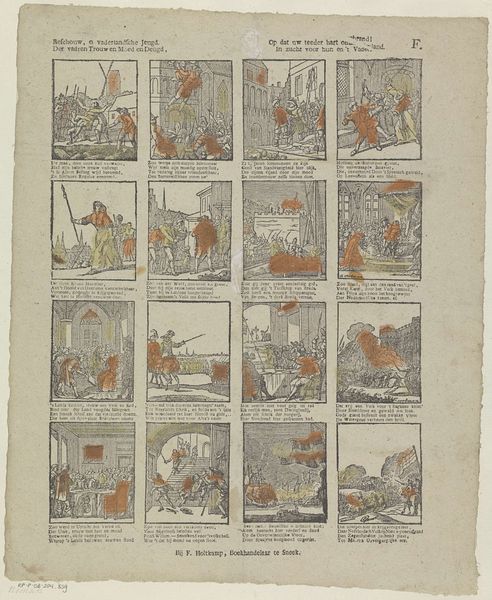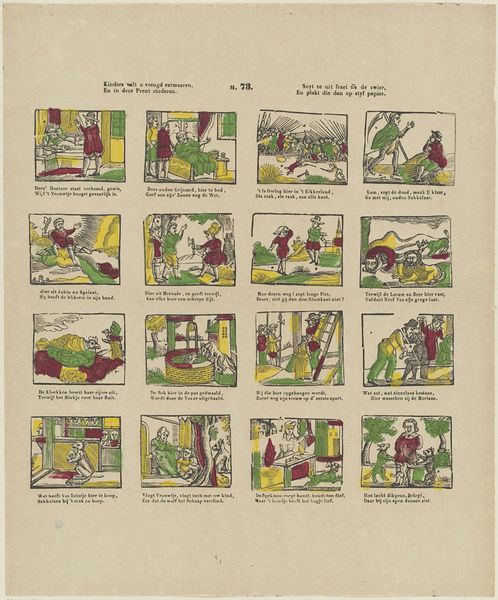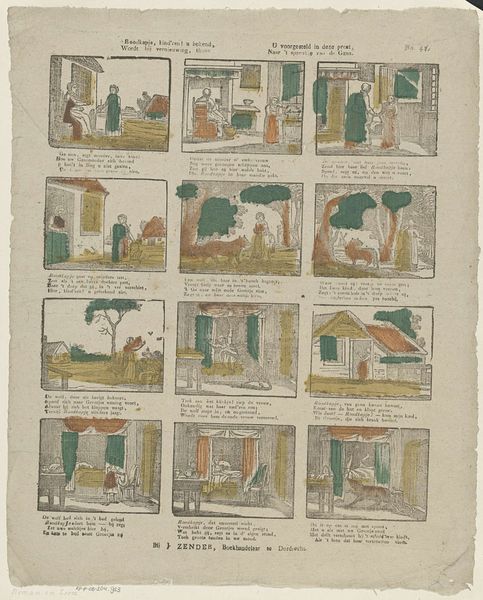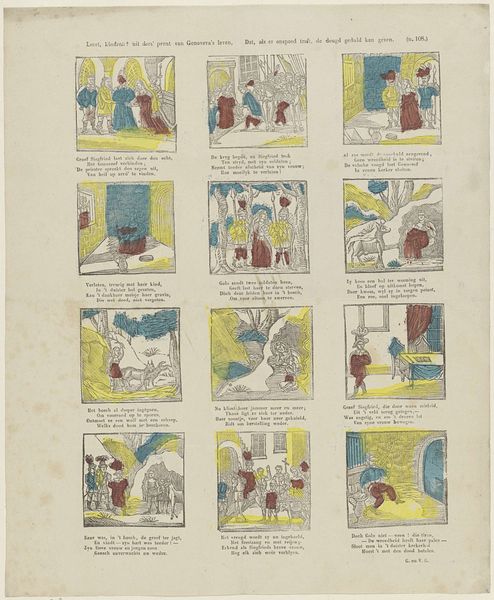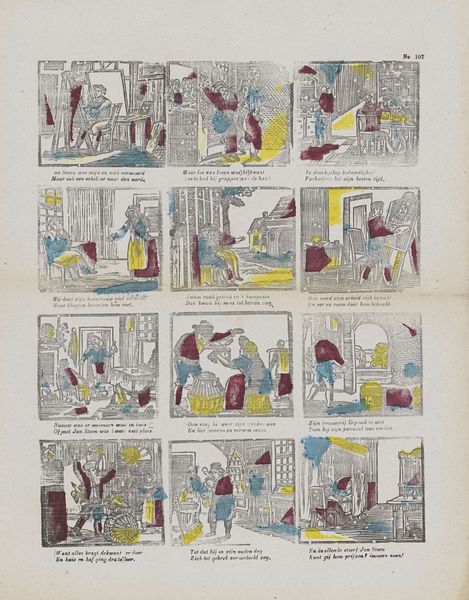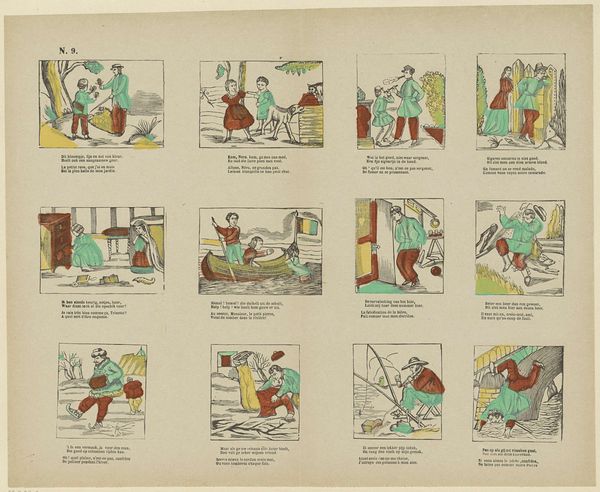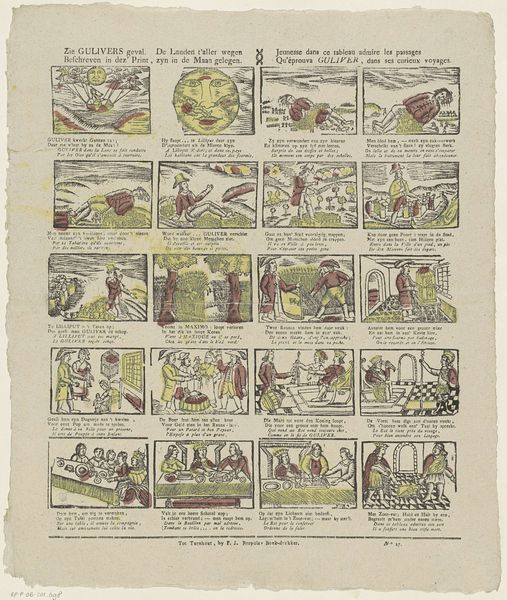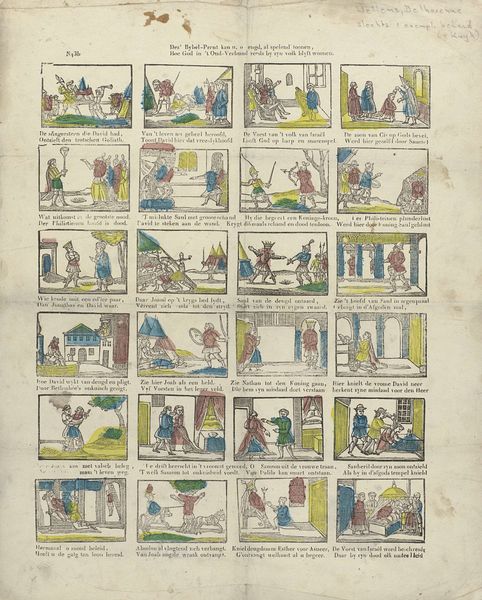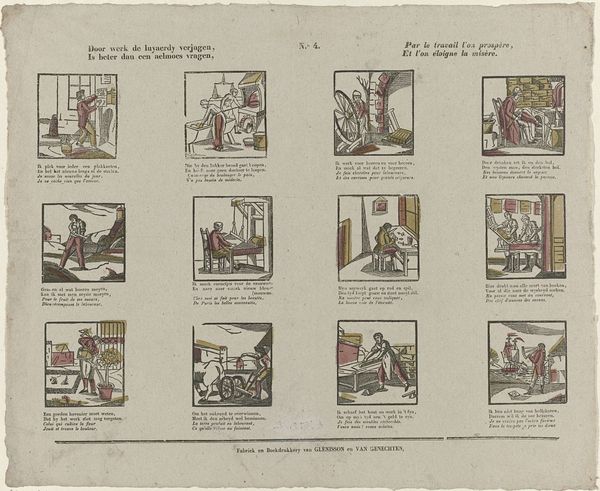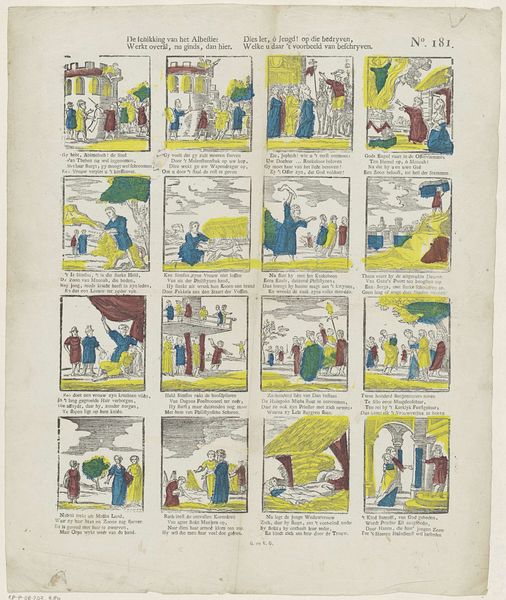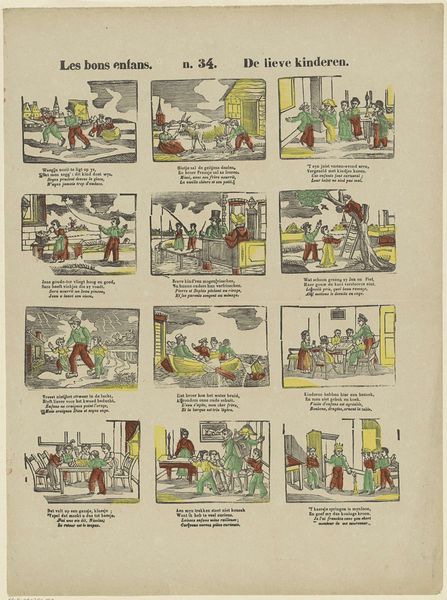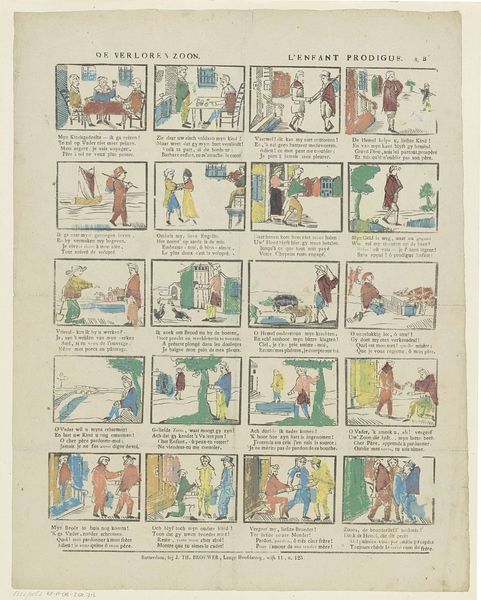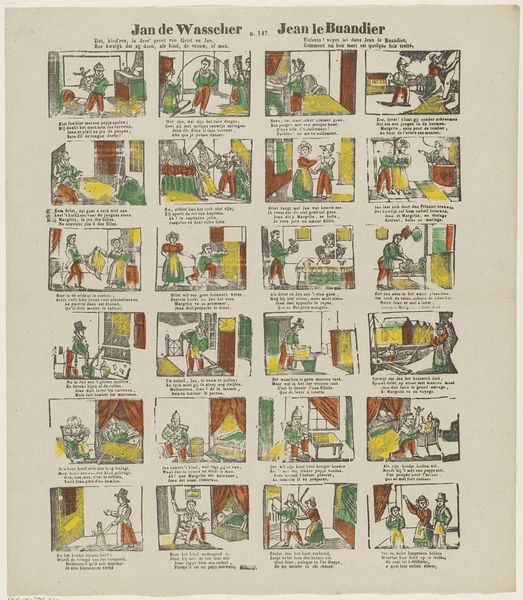
Kinders wilt u vreugd vermeeren, / En in deze prent studeren / Snyt ze uit fraie na de zwier, / En plakt die dan op styf papier 1833 - 1900
0:00
0:00
graphic-art, print
#
graphic-art
#
comic strip sketch
#
narrative-art
# print
#
folk-art
#
comic
Dimensions: height 394 mm, width 320 mm
Copyright: Rijks Museum: Open Domain
Curator: This captivating piece, titled "Kinders wilt u vreugd vermeeren, / En in deze prent studeren / Snyt ze uit fraie na de zwier, / En plakt die dan op styf papier," which translates to "Children want to increase joy, / And study this print / Cut them out nicely according to the fashion, / And then paste them on stiff paper", originates from sometime between 1833 and 1900, made by Glenisson & Van Genechten. What are your initial thoughts? Editor: Immediately, I am struck by the compartmentalization. The grid of images, each contained within a simple border, presents a story in serialized form, almost like a very early comic strip. The muted color palette, dominated by greens and browns, adds a sense of rustic charm, wouldn't you say? Curator: Precisely. It's worth noting that such prints played a vital role in popular culture, serving not only as entertainment, particularly for children, but also subtly imparting moral lessons and reflecting social norms of the period. These kinds of narratives often circulated widely. Editor: Indeed. The rudimentary linework contributes to a naiveté that is mirrored, let's say, in the subject matter itself—everyday life rendered in vignettes. Each little tableau emphasizes form in simplistic gestures and symbolic posture. The flatness almost renders depth irrelevant to these self-contained moral plays. Curator: Exactly! They served almost as educational tools disguised as playthings. Consider the implications for literacy too—engaging narratives visualized for those still learning to read. And note the inscription in the artwork – inviting the child to cut and paste – underlining this aspect of direct hands-on engagement! Editor: It's all meticulously orchestrated, isn't it? And you mentioned their accessibility – I mean look at the composition as a system: you could mix and match different image grids, altering the narrative structure as much as you would cut and paste different vignettes in order to make your own story and world, maybe with different morality considerations altogether! Curator: A critical reminder that even the most seemingly straightforward artwork possesses layers of socio-cultural function beyond simple aesthetics. Editor: And ultimately, these structural insights inform an enriched appreciation of Glenisson & Van Genechten's artistic intent. The stories contained in that simple frame would still hold interest even after 150 years or so, which can also measure something about human storytelling at large, can't it?
Comments
No comments
Be the first to comment and join the conversation on the ultimate creative platform.
